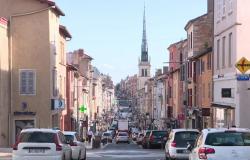Par
Jean-Christophe Buchot
Published on
June 29, 2024 at 5:00 p.m.
See my news
Follow L’Orne Hebdo
“We need a very operational organization to overcome the 6,000 kilometers of departmental roads,” explains Frédéric Farigoule, director of road management for the department. To achieve this, the maintenance of departmental roads is distributed, in the heart of Orne, between four agencies strategically distributed Sees, Gacé, La Ferté-Macé and Bellême.
Priority on safety
The Sées agency also includes the centers of Alençon, Argentan and Carrouges. These four centers are led by Steves Liégard, former principal controller of the Departmental Equipment Directorate (DDE).
Each site employs around fifteen agents, specialized in field interventions. And there are plenty of them to meet the challenge they face: ensuring the safety of all users. These operators mainly come from public works and agriculture. On the road, visibility is essential. “Everyone acts in the field according to their skills and rigorous additional training that they receive to handle the equipment,” explains Steves Liégard, emphasizing the importance of this expertise in order to comply with environmental and safety standards.
5 860 km x2x3
The mowinga seemingly mundane task, turns out to be an unexpectedly complex job, requiring brush cutters for the regular cutting of vegetation on the verges but also manual intervention for less accessible areas, such as bollards or road signs.
The instructions, although generally stable from one year to the next, adapt to meteorological and ecological hazards. This year, with the abundant rains, the grass was more vigorous than in previous years. This necessarily complicates and slows down operations.
Maintenance work, based on the model of reasoned mowing, focuses mainly on the roadsides, which they maintain over a width of one meter sixty, at a height of ten centimeters, except when visibility, in a bend example, requires mowing the embankment. This method targets a dual objective: encouraging local biodiversity while optimizing resources of the Department. But safety remains the top priority, with carefully planned operations to maximize efficiency.
During cutting periods, the tight organization of operators, from 8 a.m. to 5 p.m., with a short break at noon allows effective management of time and resources, adapted to the realities on the ground and to ecological imperatives.
Orne includes some 5,860 kilometers of departmental roadswhich should be maintained three times a year. This therefore represents a huge number of hours of work, knowing that, remember, each road has two shoulders, and that on average mowing is done at the rate of five kilometers per hour, with a spreader followed by an attendant, the latter ensuring safety and manual mowing when necessary. The mathematical problem is posed.
Three times max
“At the beginning of the 2000s, for the images of the Tour de France, we required clear roads, now we like the variety of aisles », rejoices Frédéric Farigoule. In fact, the first cuts are as light as possible.
Come rain or shine, the mowing calendar is set every year like clockwork. With three maximum cuts.
The first cut, between May 15 and 25focuses on visibility at intersections.
The second cut, made on only the necessary parts, is completed mid-June.
The third cup, of late August to Novemberthis time focuses on ditches and embankments. It is mainly for this more time-consuming cutting that the Department must call on private companies for reinforcements.
Invasive plants
On the side of the roads, faced with invasive exotic plants, the battle is constant. Despite various methods used – mowing, burning, excavation – these plant adversaries resist and grow back with vigor. “ It’s a continuous fight to control these invasive species without disrupting native ecosystems,” confides Steves Liégard. While it seems complex to eradicate them completely, “it is possible to limit their spread,” assures Frédéric Farigoule: “We intervene mainly in places where they are dangerous for road safety. We have started a census and mapping process to precisely identify their presence. This step is essential to develop an effective action plan, currently in the design phase, also observing what is being tested in other departments. »
Opening
Another challenge to face: the expectations of residents, especially when visibility is compromised, can be pressing. “It is crucial to find a happy medium between the desires of users and the limitations imposed,” specifies Steves Ligard. But the agencies remain fully accessible to the public, with online information and dedicated telephone numbers to facilitate communication: “This opening to the public, comments Frédéric Farigoule, aims to build aa relationship of trust and to ensure better responsiveness to the needs expressed by local residents.”
Follow all the news from your favorite cities and media by subscribing to My News.






